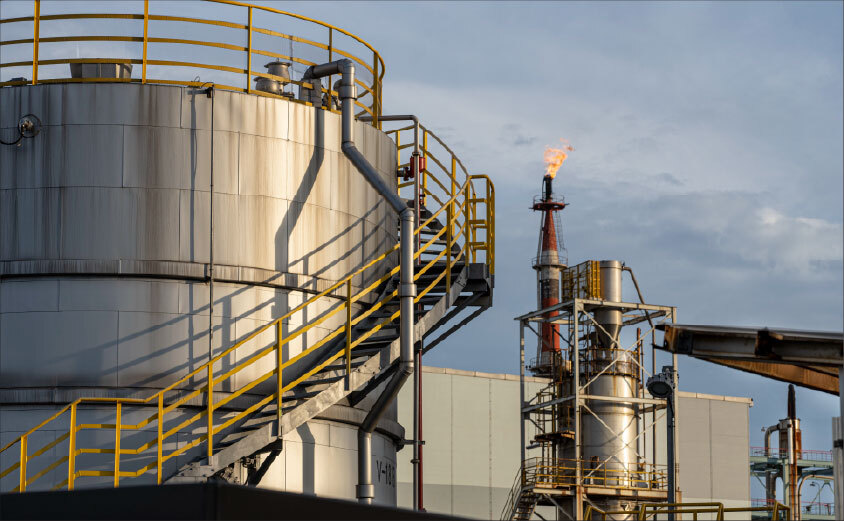How Vision 2030 is Reshaping Saudi Arabia’s Agri-Nutrient Industry for Global Leadership

“Saudi Arabia’s agri-nutrient industry is experiencing a significant transformation driven by structural changes, national strategies, and shifting global demand patterns that pave the way for long-term growth. A key trend is the incorporation of agri-nutrients into the Kingdom’s Vision 2030 diversification agenda, which aims to utilize the country’s mineral wealth and industrial capabilities to develop high-value downstream products. With some of the largest reserves of phosphate and sulfur globally, companies such as Ma’aden are aggressively increasing production capacities, positioning Saudi Arabia among the top five global phosphate fertilizer exporters. This upstream resource advantage is being leveraged to expand a diverse portfolio of phosphate-based fertilizers and specialty blends tailored for both domestic and export markets.”
GCC petrochemicals market was valued at USD 85,800 million in 2023 and is estimated to reach a value of USD 133,289 million by 2030 with a CAGR of 5.7% during the forecast period 2025-2030.
Another notable trend is the focus on specialty and customized fertilizers, which are critical for maximizing crop yields in the Kingdom’s arid climate while also supporting global agricultural productivity. Increasingly, Saudi producers are concentrating on water-soluble fertilizers, micronutrient-enriched blends, and slow-release products designed to improve soil quality in water-scarce regions, a demand that aligns with markets in Africa and South Asia.
A second major shift is the incorporation of sustainability and circular economy principles into fertilizer production. With global buyers, particularly in Europe and Asia, demanding low-carbon and environmentally sustainable inputs, Saudi producers are investing in green technologies, carbon capture methods, and renewable-powered plants to decarbonize production processes. For example, Ma’aden has pledged to reduce its carbon footprint by adopting clean ammonia pathways, which support sustainable agriculture and align with the Kingdom’s aim to become a leading exporter of blue and green ammonia for energy markets. This dual-purpose strategy ensures that agri-nutrient production addresses both food security and energy transition objectives. Moreover, waste-to-value initiatives are being explored, where byproducts like phosphogypsum are examined for industrial applications, thereby minimizing environmental impact and creating new revenue opportunities.
A third distinct trend is the regionalization of exports, with Asia and Africa emerging as key markets. While traditional markets for Saudi fertilizers have included South Asia, particularly India, the industry is increasingly targeting the rapidly growing African markets, where population growth and food security challenges are driving fertilizer demand. Saudi Arabia is capitalizing on its logistical advantages via the Red Sea and Arabian Gulf shipping routes, providing efficient access to demand hubs in both Africa and Asia. Strategic trade agreements and long-term supply contracts are reinforcing this export focus, enabling Saudi producers to minimize reliance on cyclical spot markets and stabilize revenue streams.
The fourth trend involves the digital transformation of agricultural inputs. Saudi producers are expanding their role beyond traditional fertilizer manufacturing to include digital farming solutions, advisory services, and precision agriculture tools, creating a comprehensive offering for farmers. With limited arable land and strict water management, digital agri-nutrient application systems that optimize dosage and timing are being tested on local farms. This approach not only enhances fertilizer efficiency and reduces waste but also aligns with the sustainable farming priorities of international buyers, positioning Saudi companies as holistic agricultural partners rather than mere commodity suppliers.
A fifth trend is the rise of joint ventures and international collaborations aimed at accelerating innovation and global market penetration. Saudi producers are increasingly partnering with multinational chemical and fertilizer companies to facilitate technology transfer, develop advanced products, and co-invest in downstream facilities. These alliances not only broaden product portfolios but also secure distribution networks in fast-growing markets. Collaborations in specialty nutrients, crop protection integration, and climate-smart fertilizers are gaining traction, reflecting a global trend toward integrated farm solutions.
Lastly, there is a significant overarching trend in aligning the agri-nutrient industry with food security needs at both domestic and global levels. Locally, Saudi Arabia is advancing controlled-environment agriculture and greenhouse farming to decrease reliance on imported food, while agri-nutrient companies are customizing products to meet the requirements of these modern cultivation methods. Globally, as food demand is expected to grow by over 50% by 2050, Saudi producers are positioning themselves as reliable suppliers of critical crop inputs amidst geopolitical supply chain disruptions. This strategic positioning enhances the Kingdom's role in ensuring food security at home and abroad.